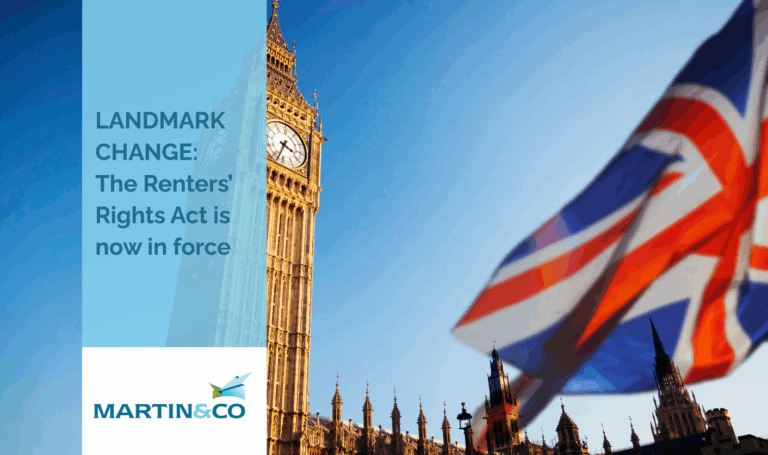In the UK, there are certain rules landlords must follow when taking deposits from their tenants.
And those rules include tenancy deposit protection.
In this guide, we’ll answer key questions around deposit protection and explain what a landlord’s obligations are.
What is tenancy deposit protection?
Deposit protection was introduced in 2007 to provide a layer of security for tenants’ deposits.
Resolution services are also available through tenancy deposit protection when a landlord and tenant are unable to agree on any proposed deposit deductions, while also overseeing deposit returns.
Here at Martin & Co, we protect tenants’ deposits in the Deposit Protection Service scheme.
Do landlords have to protect tenancy deposits?
Any landlord taking a tenancy deposit as part of an Assured Shorthold Tenancy (AST) must protect their tenant’s deposit.
The deposit must be protected within 30 days of receiving it and tenants must also be given certain documentation and information within the same timeframe.
Is it illegal to not to protect a tenant’s deposit?
It’s been a legal requirement for landlords to protect tenancy deposits since April 2007.
Failure to protect a tenant’s deposit within 30 days of receipt could see your tenant take court action against you.
What happens if a landlord doesn’t protect their tenant’s deposit?
If a tenant discovers you’ve failed to protect their tenancy deposit, or you haven’t provided them with the information on where it’s being held, they can take court action.
The court could demand that you:
- Pay compensation to your tenant of up to three times the value of their deposit
- Repay the tenant’s deposit in full
It can also be difficult to issue a section-21 notice to regain possession of your property if you’ve failed to protect a tenancy deposit.
Do landlords have to take a deposit in the UK?
There’s no legal requirement for you to take a tenancy deposit from your tenant when issuing a new Assured Shorthold Tenancy (AST).
And if there’s no deposit, there are no deposit protection requirements to adhere to.
However, it’s extremely rare for a landlord to not take a deposit.
Tenancy deposits: A landlord’s obligations
There are several obligations landlords must adhere to when it comes to tenancy deposits.
1. Maximum deposits
As part of the Tenant Fees Act 2019, the amount of deposit you’re able to take from your tenant is capped at:
- Five weeks’ rent for annual rents of less than £50,000
- Six weeks’ rent for annual rents of more than £50,000
If you also take a holding deposit from a potential tenant, for them to secure the property, this must be no more than one week’s rent.
2. Deposit protection timeframes
Once you’ve taken your tenant’s deposit, you must protect it within 30 days.
3. Prescribed information
As well as protecting your tenant’s deposit within 30 days of receiving it, you must also provide the tenant with certain information within the same timeframe, known as ‘prescribed information’.
Prescribed information includes:
- The address of the rental property
- The amount of deposit the tenant has paid
- How their deposit is protected
- The name of the deposit protection scheme being used, and the scheme’s contact details
- The details of the deposit protection scheme’s resolution service
- The landlord’s name and contact details
- The name and contact details of the landlord’s letting agent (if using)
4. Returning the deposit
Your tenant must request their deposit back at the end of their tenancy and you must reply and clearly state any deductions you wish to make and the reasons for making them.
A tenant’s deposit must be returned to them within 10 days of an agreement being reached on how much will be returned.
5. Deductions and disputes
Deductions from a tenant’s deposit can only be made:
- If the tenant agrees
- If there has been a deposit protection resolution
- If a court order is in place
Common deductions from tenancy deposits include:
- Unpaid rent when the tenancy agreement expires
- Unpaid bills
- Broken, stolen or missing belongings or furnishings
- Damage to the property or contents
- Poor cleaning or hygiene
- A lack of required maintenance from the tenant as per the tenancy agreement




